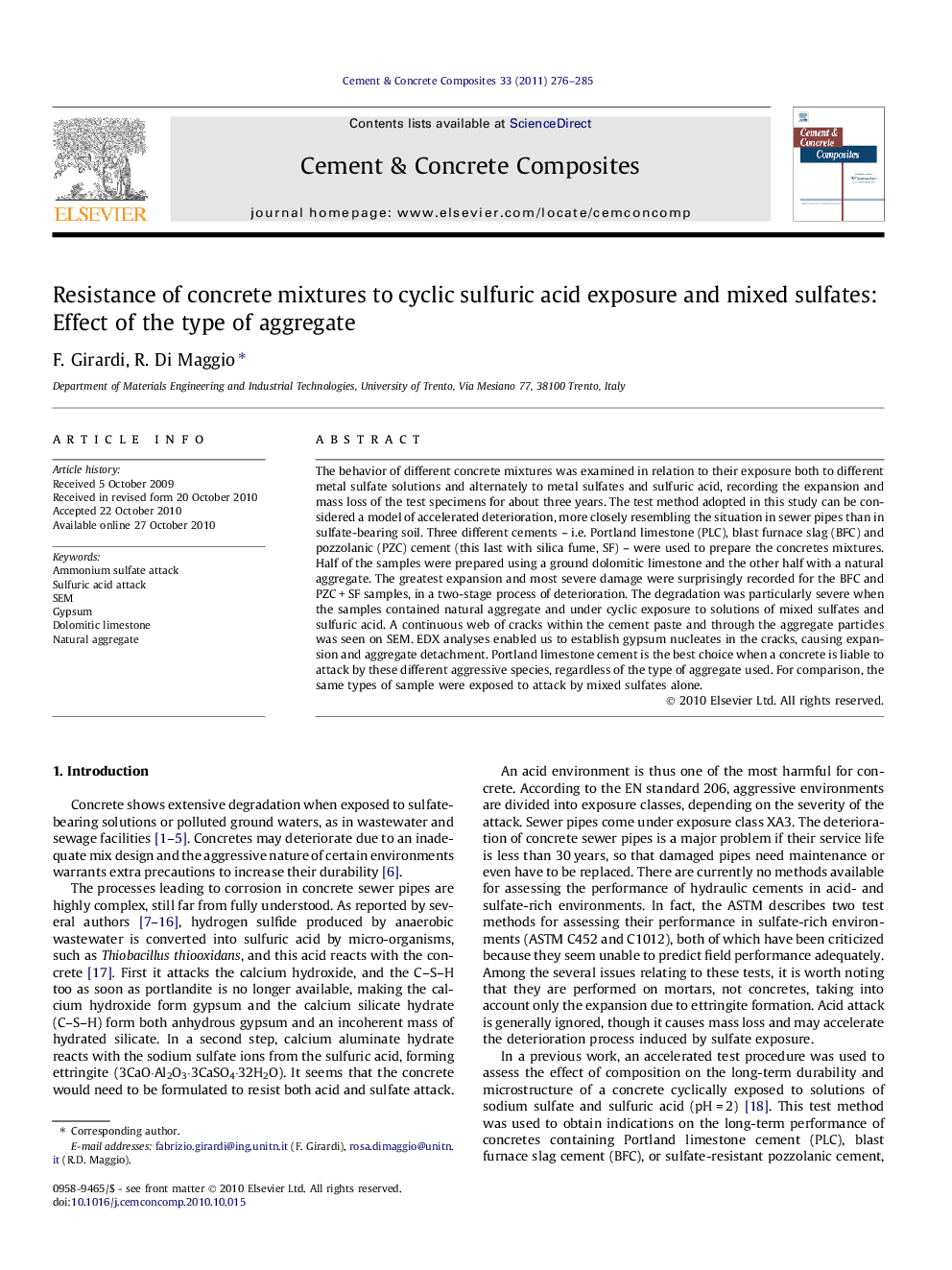| Article ID | Journal | Published Year | Pages | File Type |
|---|---|---|---|---|
| 10621920 | Cement and Concrete Composites | 2011 | 10 Pages |
Abstract
The behavior of different concrete mixtures was examined in relation to their exposure both to different metal sulfate solutions and alternately to metal sulfates and sulfuric acid, recording the expansion and mass loss of the test specimens for about three years. The test method adopted in this study can be considered a model of accelerated deterioration, more closely resembling the situation in sewer pipes than in sulfate-bearing soil. Three different cements - i.e. Portland limestone (PLC), blast furnace slag (BFC) and pozzolanic (PZC) cement (this last with silica fume, SF) - were used to prepare the concretes mixtures. Half of the samples were prepared using a ground dolomitic limestone and the other half with a natural aggregate. The greatest expansion and most severe damage were surprisingly recorded for the BFC and PZCÂ +Â SF samples, in a two-stage process of deterioration. The degradation was particularly severe when the samples contained natural aggregate and under cyclic exposure to solutions of mixed sulfates and sulfuric acid. A continuous web of cracks within the cement paste and through the aggregate particles was seen on SEM. EDX analyses enabled us to establish gypsum nucleates in the cracks, causing expansion and aggregate detachment. Portland limestone cement is the best choice when a concrete is liable to attack by these different aggressive species, regardless of the type of aggregate used. For comparison, the same types of sample were exposed to attack by mixed sulfates alone.
Related Topics
Physical Sciences and Engineering
Engineering
Industrial and Manufacturing Engineering
Authors
F. Girardi, R. Di Maggio,
